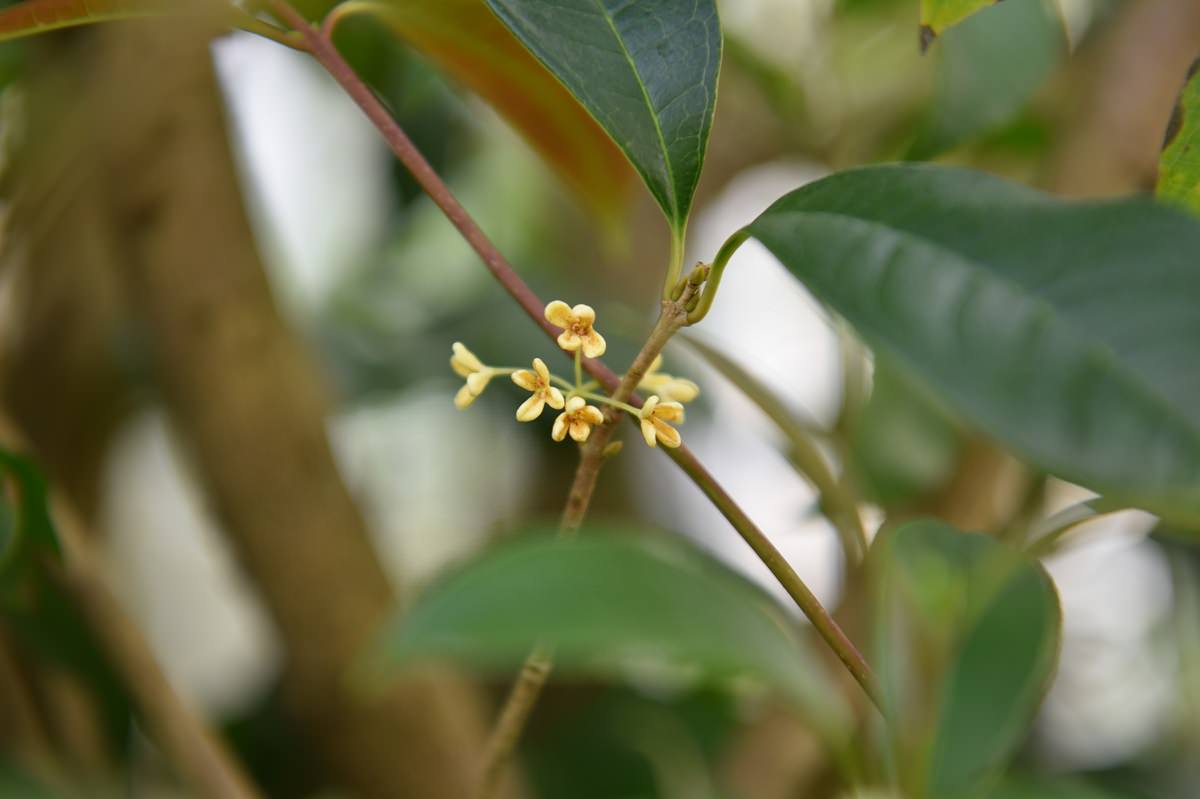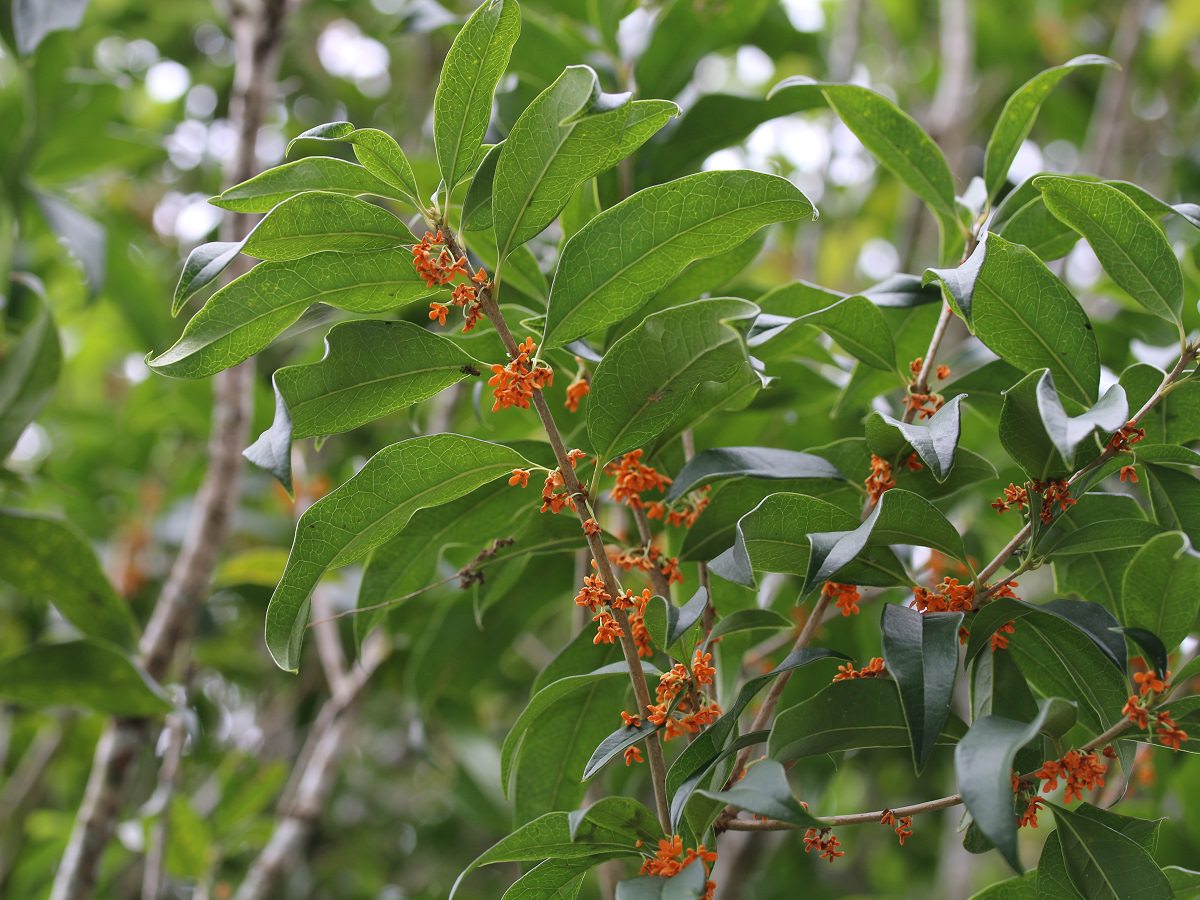Autumn Fragrance: Osmanthus
When the season of autumn arrives, leaves change colour and fall off the tree. However, Osmanthus tree leaves remain green and its small sweet-scented blossoms fills the air with their refreshing fragrance.
Location: Eco Garden, Plants & Us Greenhouse

Osmanthus

Osmanthus
- Origin of Name
Scientific name: Osmanthus Fragrans
English common name: Sweet Olive
Osmanthus came from the Greek words osme (smell) and anthos (flower), referring to the plant's fragrant flowers; Fragrans means aromatic. Although the osmanthus flowers are small in stature, their aroma is commonly praised as "strong and powerful, surpassing other flowers”. The Osmanthus flowers in the 8th month of the traditional lunar calendar. Thus the 8th month of the lunar calendar is also known as the Osmanthus month.
- Flower Language Meaning
Nobility and elegance
- Osmanthus in Traditional Chinese Culture
The Chinese word for osmanthus “gui” (桂) has the same pronunciation as “fortune” or “noble” (貴). Therefore osmanthus has been a symbol of auspice and success.
In some Chinese traditions, the bride wears sweet-scented osmanthus on the wedding, as a blessing of “many offspring to come”. The combination of osmanthus and lotus seeds in traditional Chinese desserts also signifies “blessings for offspring”.
- Osmanthus and Cooking
The sweetness of osmanthus makes it a popular ingredient in Chinese cooking especially desserts. Here are some examples:
1. Adding the flowers to mild white distilled spirits along with rock sugar, and sealing in glass jars. After three months, the floral fragrance fully infuses in the liquor and becomes osmanthus wine
2. Adding dried osmanthus, dried wolfberries, rock sugar and agar powder to make the Osmanthus Flower Jelly
3. Infusing osmanthus to green tea / herbal brew to make the Osmanthus tea
4. Boiling with water to make the soup base for tang yuan (glutinous rice dumplings in sweet soup)

